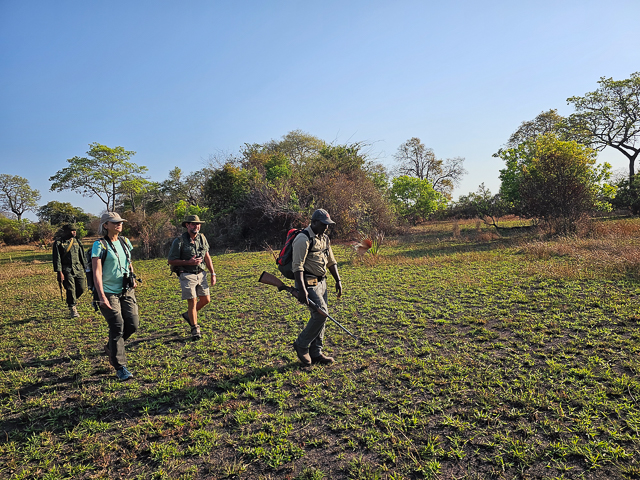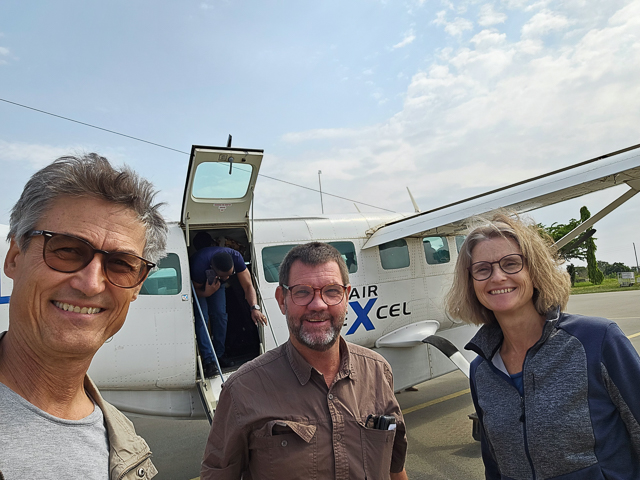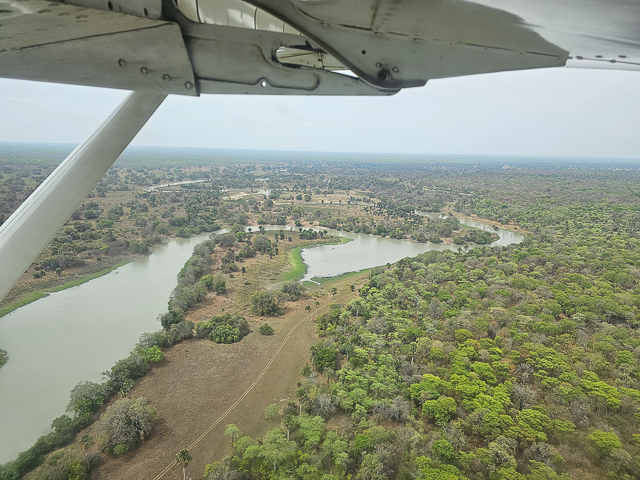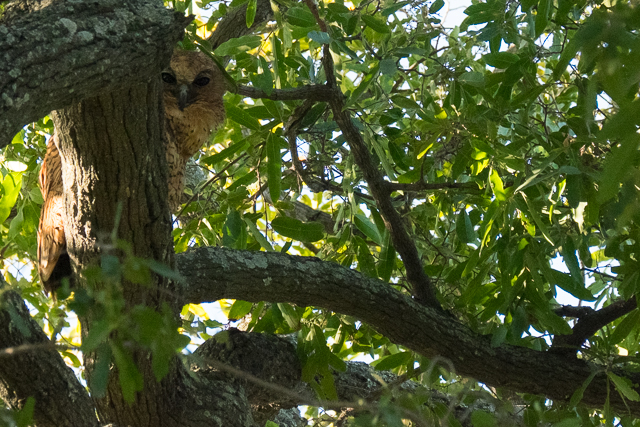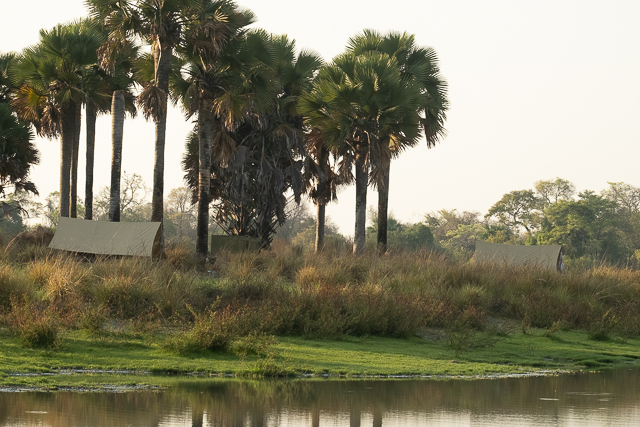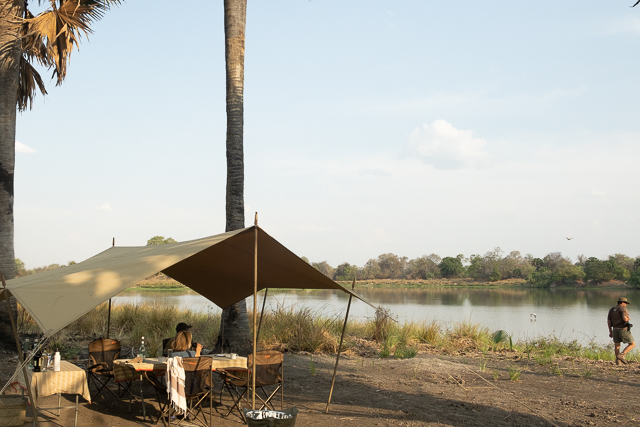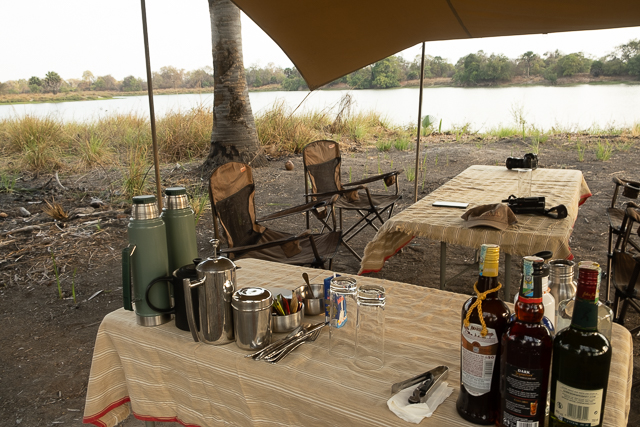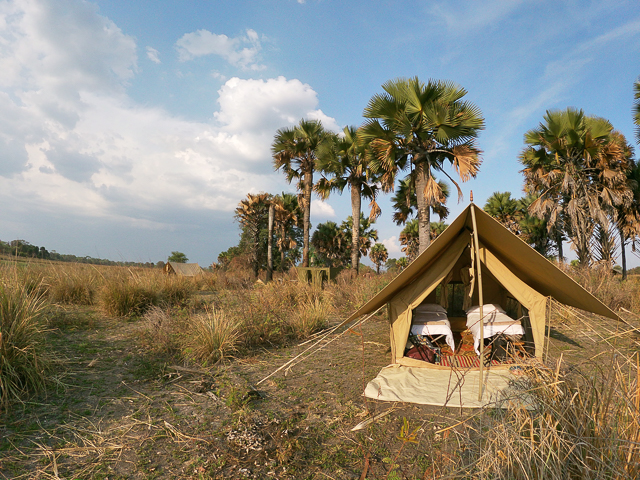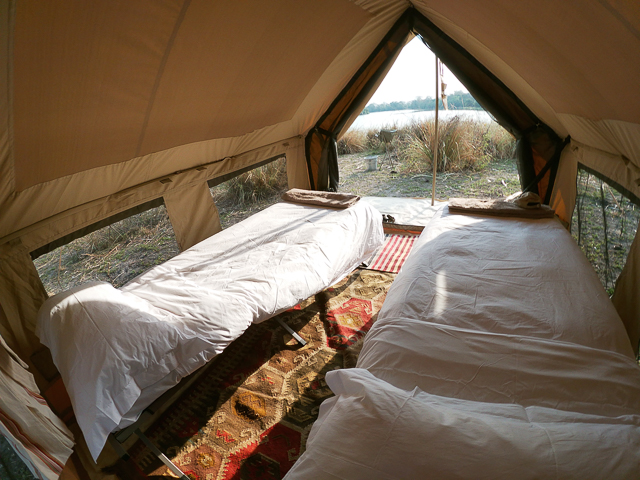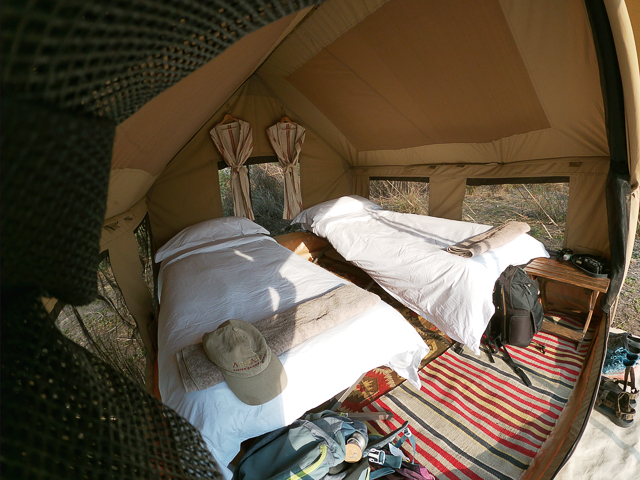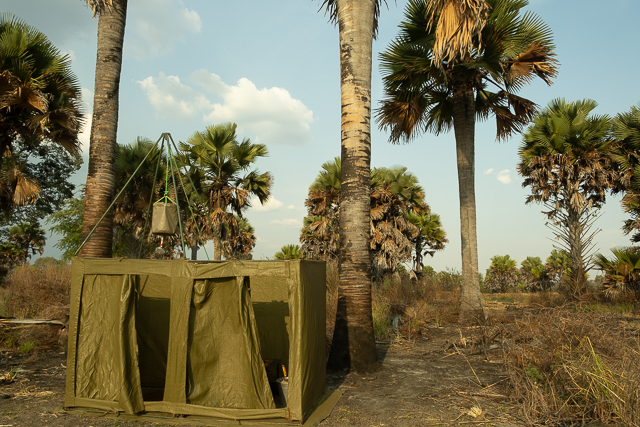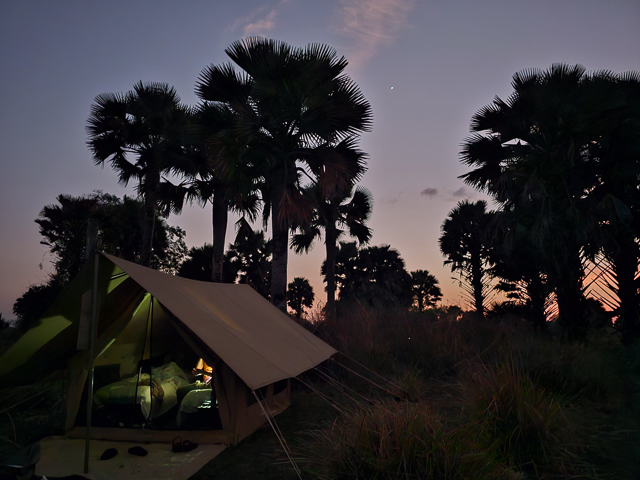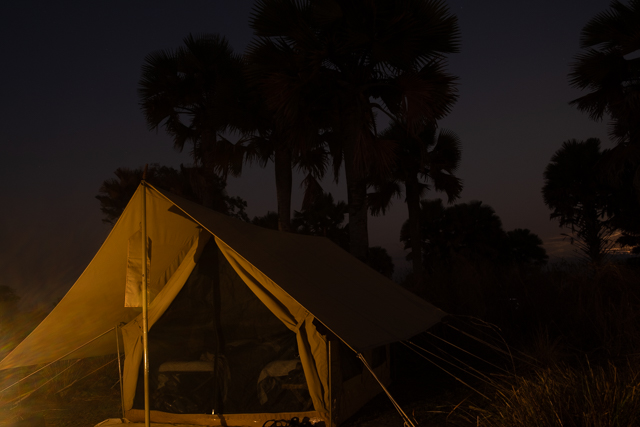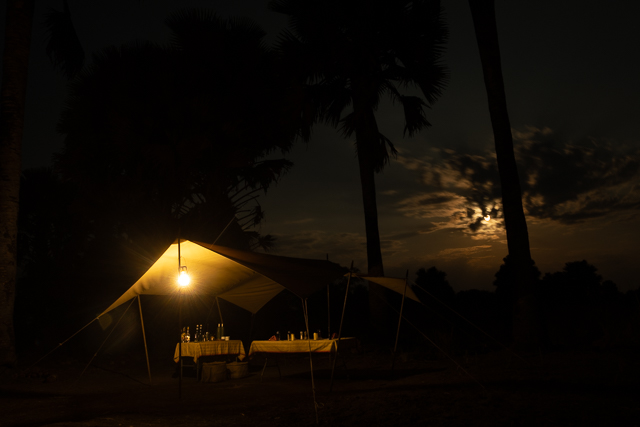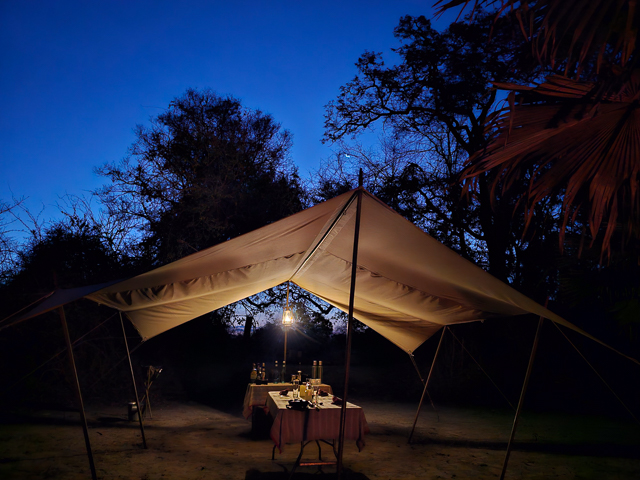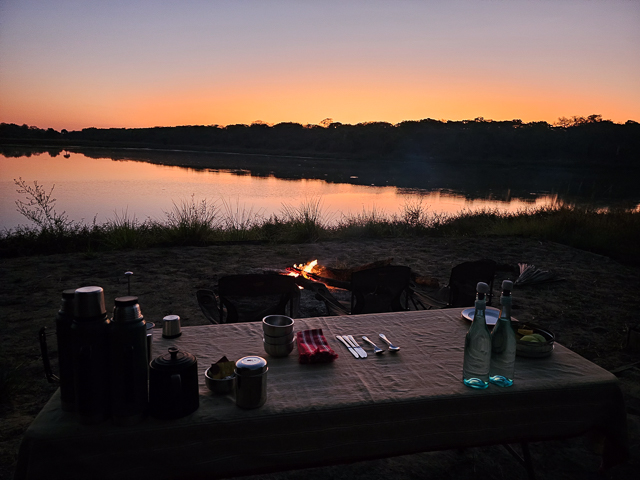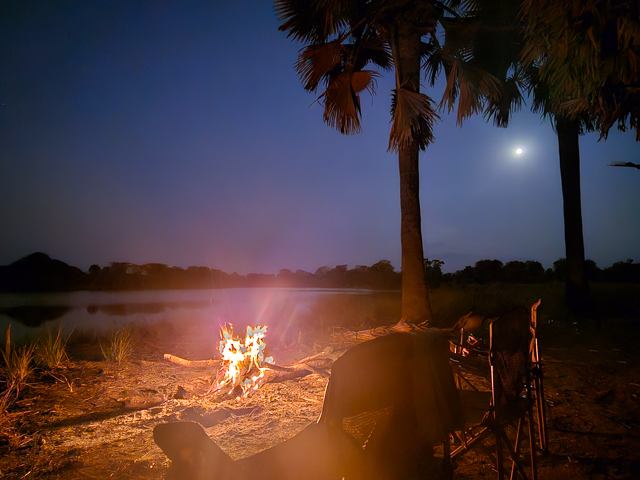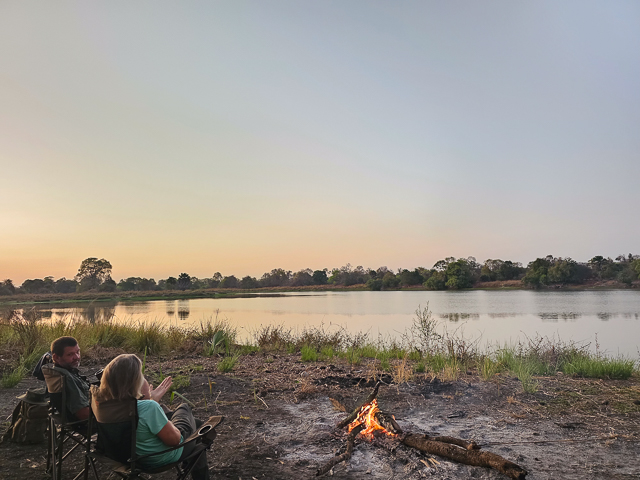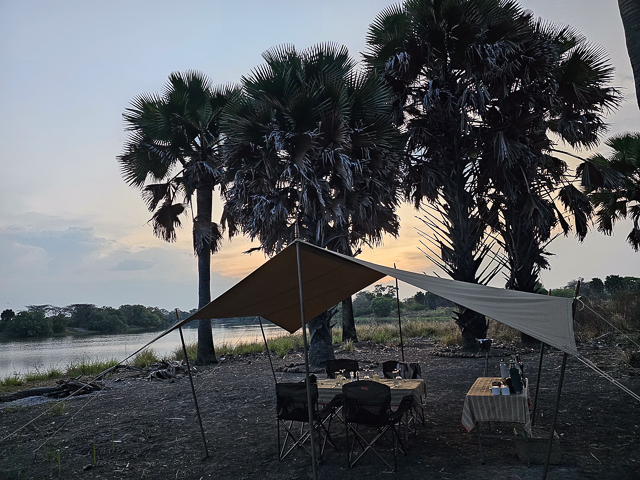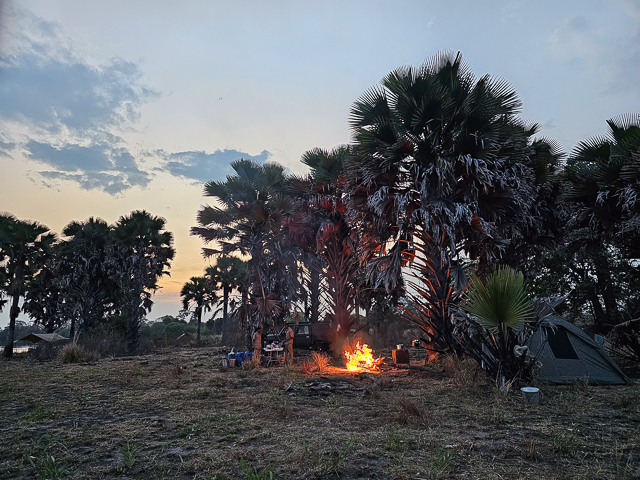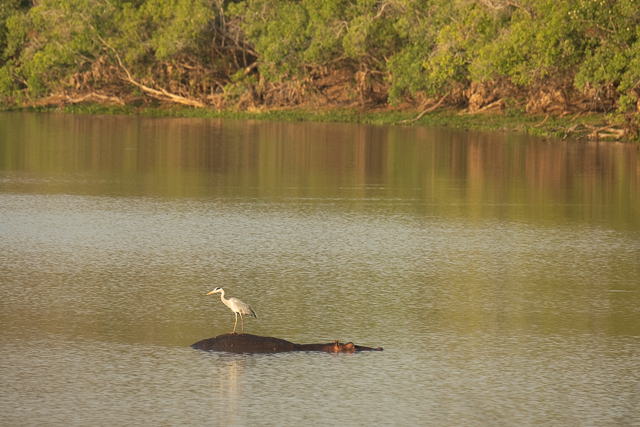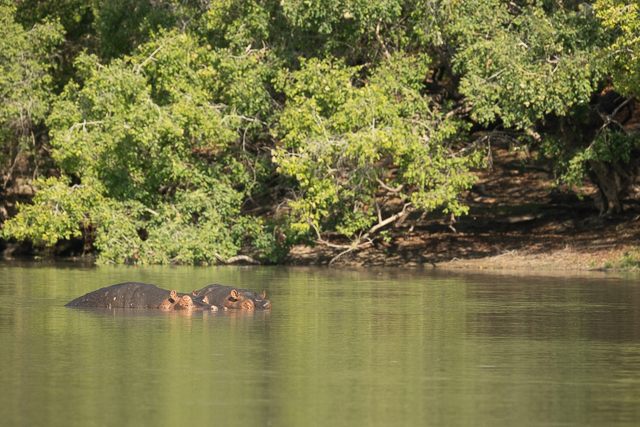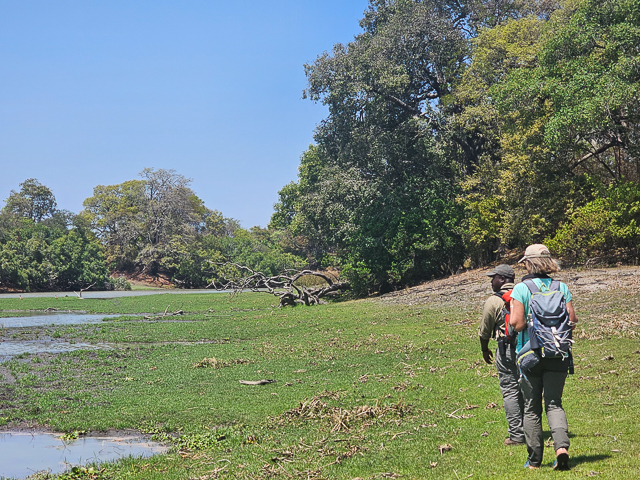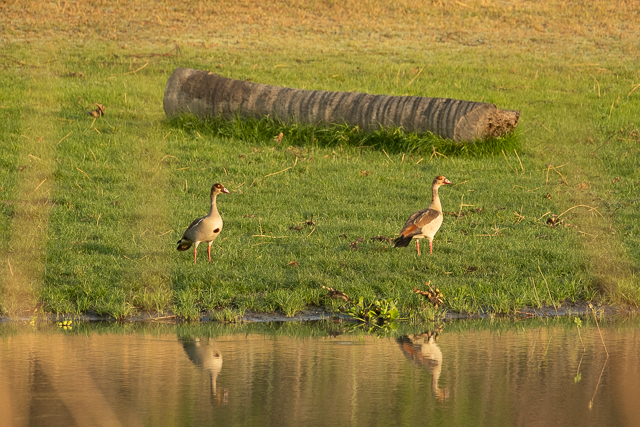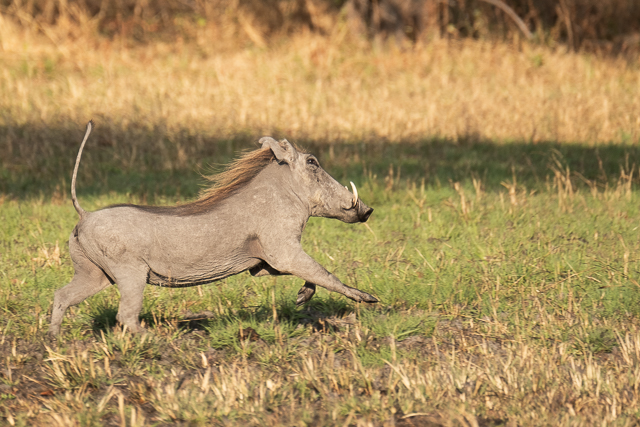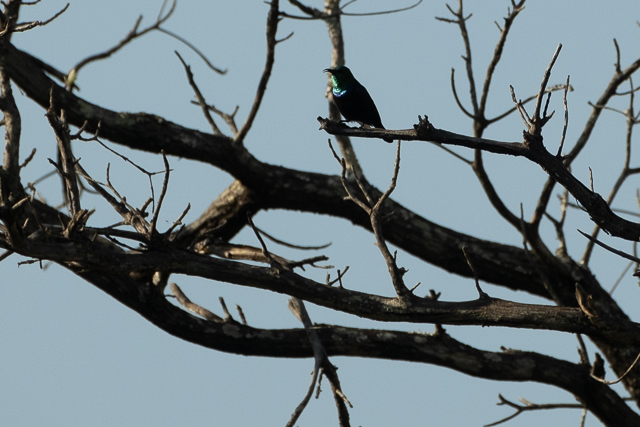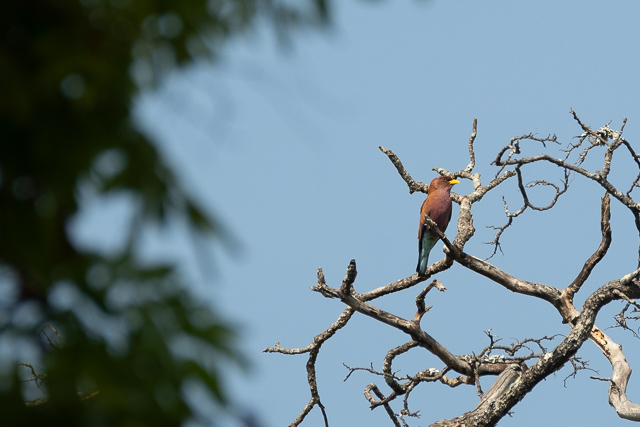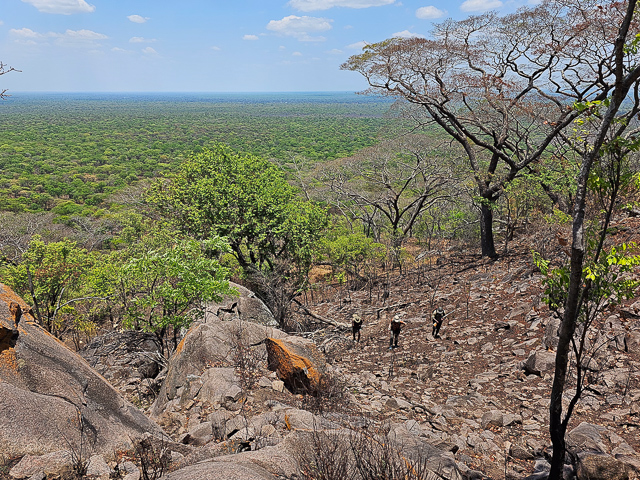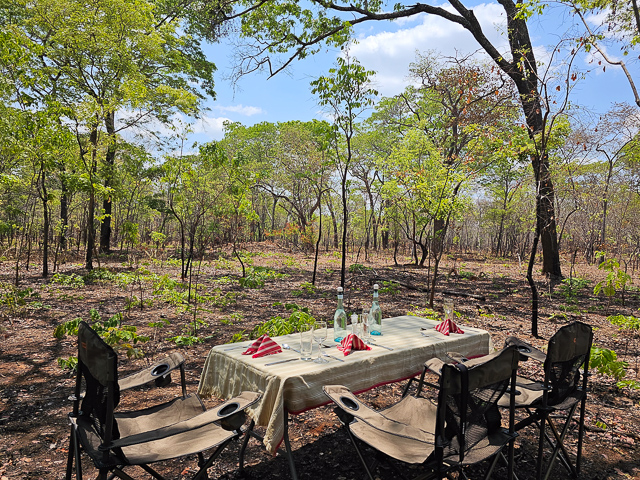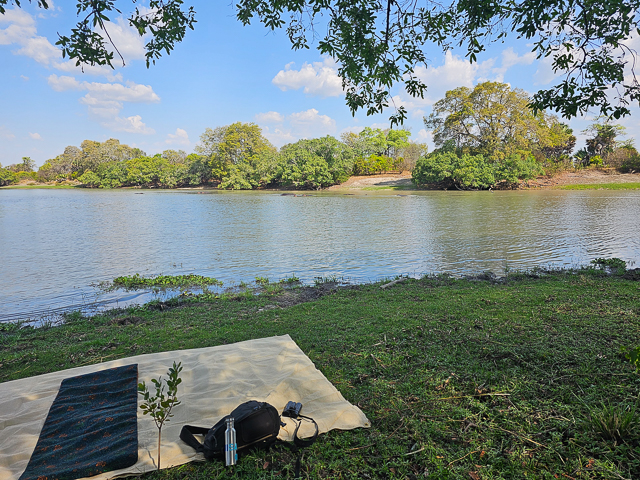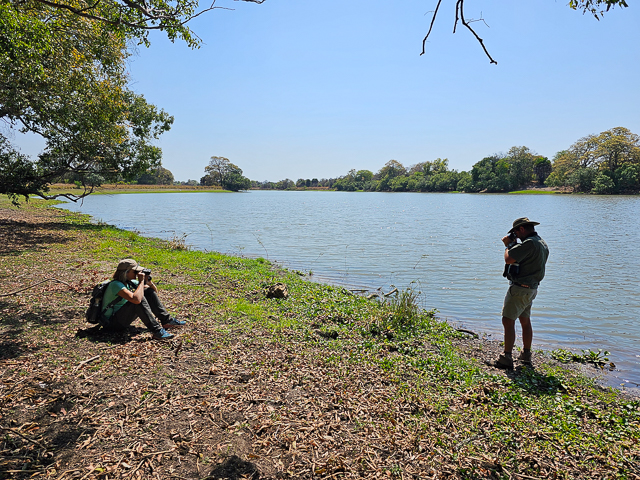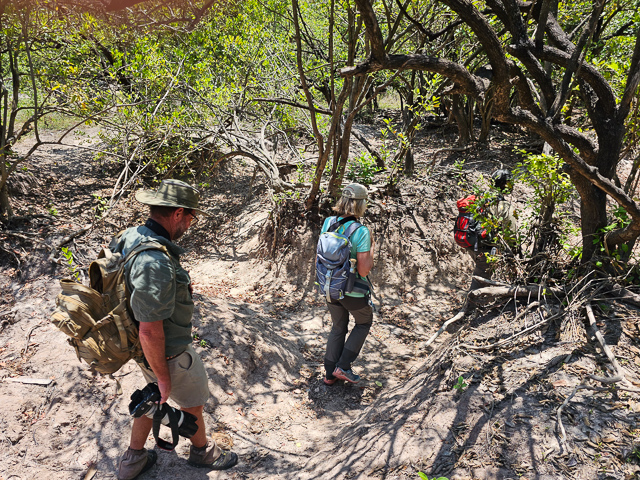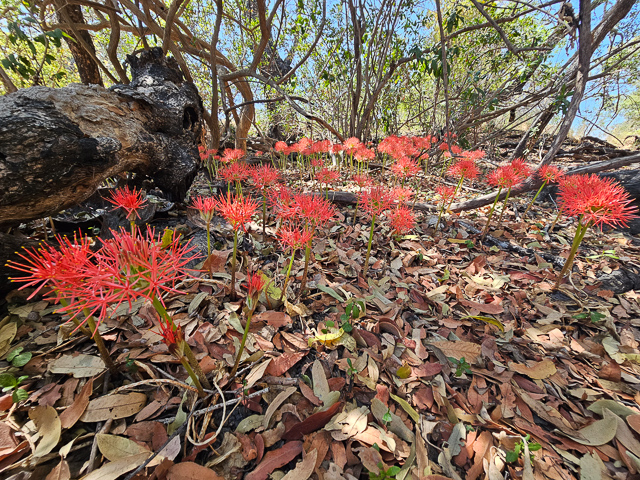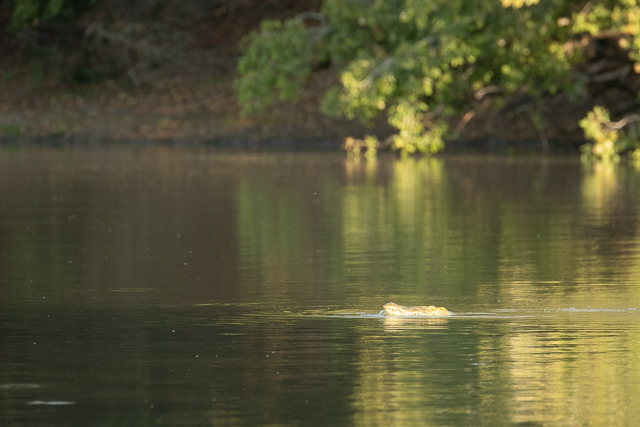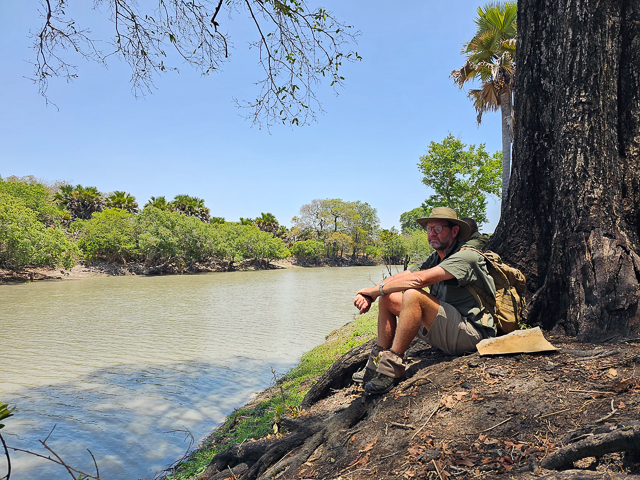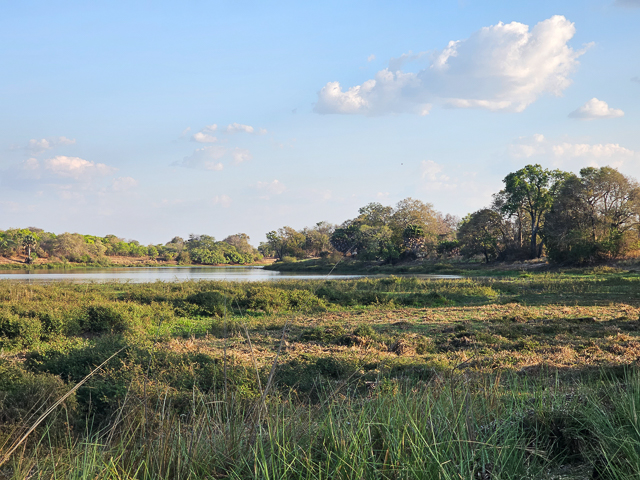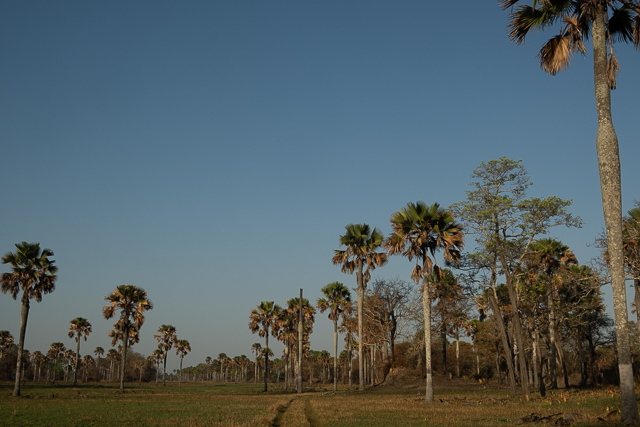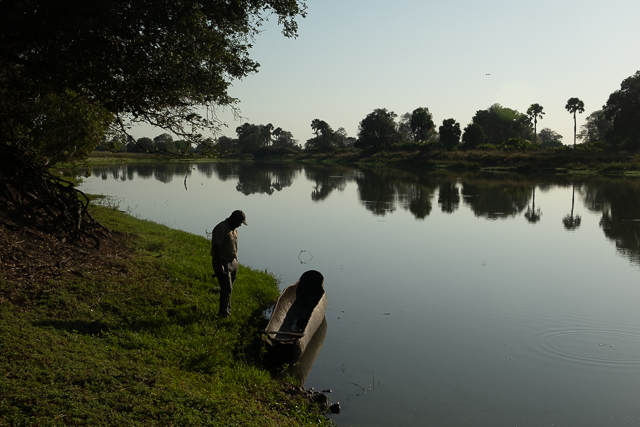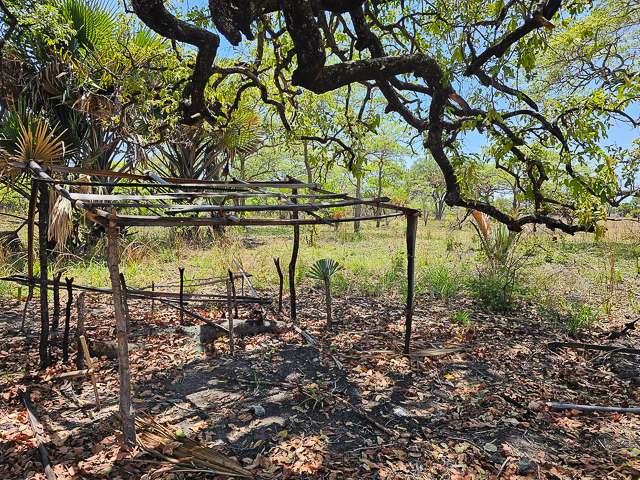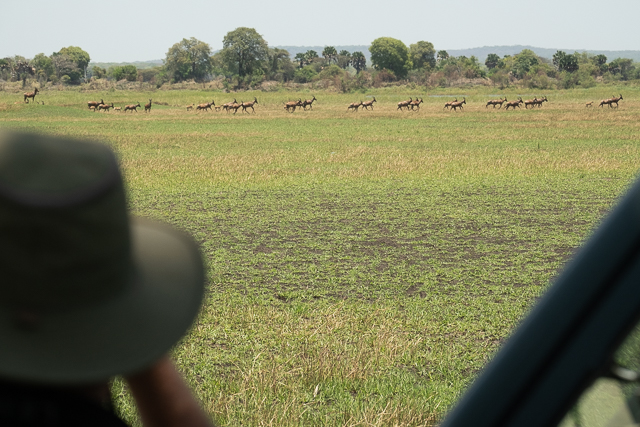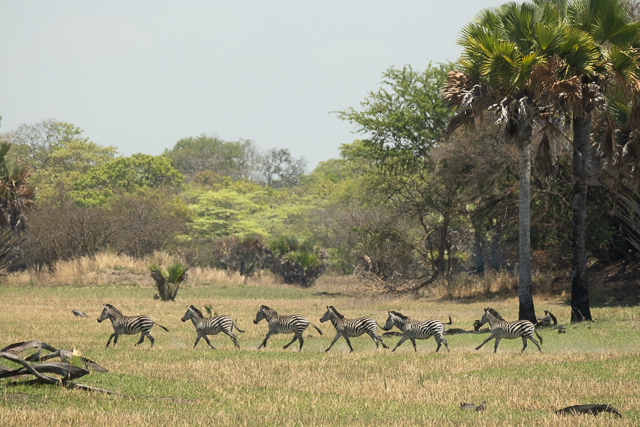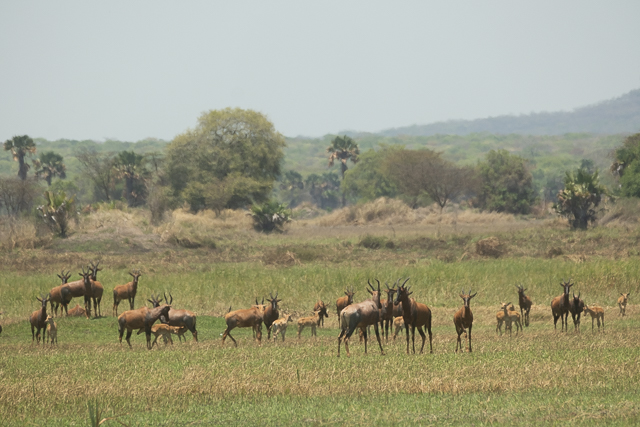Gillian and I met Dave at Arusha Airport in Tanzania. Local outfitter Nomad Tanzania had invited us on a recce (a reconnaissance trip to have a look at somewhere new or that has changed) to see their new Expeditionary Walking Camp. This was currently in Ugalla River National Park.
This protected area has recently changed status. It used to be a game reserve where hunting was the only activity. In 2019 a 3,865km2 (1,493 sq mi) portion (equivalent to about half the area of Yellowstone National Park) was excised from the reserve to form Ugalla River National Park.
Although Dave and I work together we usually only see each other when we are in North America promoting our custom safaris. Look out for us there in the beginning of March next year! With big smiles we caught up on news during the flight. Dave had been on safari in Uganda, and Gillian and I had come from our home in the Spanish Pyrenees.
The flight followed part of the rift valley, overflying a mixture of bush and scattered settlements. After refueling at Tabora we seemed to leave the last villages and fly over miles of miombo woodland. As we descended we could see the winding course of the Ugalla River.
This stood out in stark contrast to the surrounding expanse of woodland. The park is well named, even though the river is actually a tiny part of the whole protected area. It seemed small and insignificant now at the peak of the dry season, but during the rains its influence must be tremendous. On either side of the river, anything from a 100m to more than a kilometer from the river, the vegetation was dominated by grasses and flood-resistant fan palm trees. We saw water level stains about 2 metres up the palm trees, showing us that all of this area would be flooded. The topsoil here is mostly clay. Beyond the open area there was clear change. The soil became sandy, and a band of combretum trees (bush-willows) began. A little further away from the river and we were walking among the tall trees of miombo woodland.
Prim, the Expeditionary Walking Camp manager and walking guide, was at the airstrip to meet us. Last year Prim introduced me to a remote corner of Katavi National Park, and it was good to see him again.
On our way to camp along the palm-lined river we stopped to look at the crocs, hippo and herons that seem to share every stretch of the river. We saw a huge bird fly back to a more distant palm and realized it was a Pel´s fishing owl! That is a great bird to see anywhere, and it was quite a surprise to see one in our first hour in the park. These are enormous shy owls that specialize in catching fish when its competitors such as the ubiquitous African fish eagle are asleep.
The camp has been carefully designed to blend simplicity with comfort, allowing it to be easily moved, even on a day to day basis if a group is walking a lot. There are A-frame canvas tents with high mosquito-netted sides. If you leave the tent flaps rolled up at night you can lie in your cot and see the activity outside. The tent has a colorful Persian rug on the floor and crisp linen sheets and duvet. The amenities have their own rectangular tent with two compartments, a shower and a loo, which is set back behind the tents. The loo is simply a wooden toilet seat over a hole in the ground. A small shovel and pile of dirt serves as the flush. The mess tent is a fly sheet with a table and chairs. This feeling of simplicity is something that I yearn for at times. Although this may not be everyone´s cup of tea, it is an ideal camp for a remote wilderness like Ugalla. And I assure you Ugalla is a wilderness.
As we arrived in our first camp at Katungulu a croc had been basking in front of the tents, and it slid quickly into the river. The game here was quite sparse and shy. We sighted a bushbuck in a thicket nearby. Warthogs came and went. The birdlife was wonderful, especially as we were by water. At night, dawn and dusk the wheeze-honk calls of hippos boomed at us across the water.
One day we hiked away from the river and into the miombo woodland. Dave was in his element here as the vegetation is similar in many parts of Zimbabwe. In fact Dave was in his element everywhere in this area! We identified a purple-banded sunbird, which is a species we would hope to find here. It looks smaller but very similar to the more common Marico sunbird. We were hoping to see sable antelope somewhere in this woodland, and we arrived at a spring with promising tracks. This would be a very exciting species to see as they are not common in East Africa.
After a couple of nights we did a longer hike following the river westwards back towards Muhuba airstrip, while camp moved to a new location. We came across an area where crocs had been nesting. We startled a family of warthog during our siesta in the shade of a fig tree. As we neared camp we began seeing more wildlife – giraffes, impala, waterbuck, warthog, and we followed a herd of elephants feeding in the long grass, arriving in the new location in time for sunset.
Another day we drove further west still, through amazing flood plains with forests of scattered huge fan palms. It seemed that as we went west we saw more concentrations of wildlife. We found a fish poacher´s canoe moored, and later saw some poachers with their canoes filled to the brim with their catch. It must be quite a business in this area. Later that day we came across lion tracks crossing the road on their way to the river. We stopped at an abandoned fish poacher´s camp. We then arrived at a vast open area with lots of plains game, families of zebra and herds of topi.
It is likely that in the coming years the numbers of wildlife will increase dramatically because national parks generally patrol their areas. All three of us really enjoyed our time here. It was definitely worth the visit, and we would love to come back in two or three years’ time when the wildlife have increased. The sense of being in the wilderness and the freedom of walking is special. With luck we may even find sable antelope next time. It was also fantastic to be in the bush with Dave.
Justin 2023

